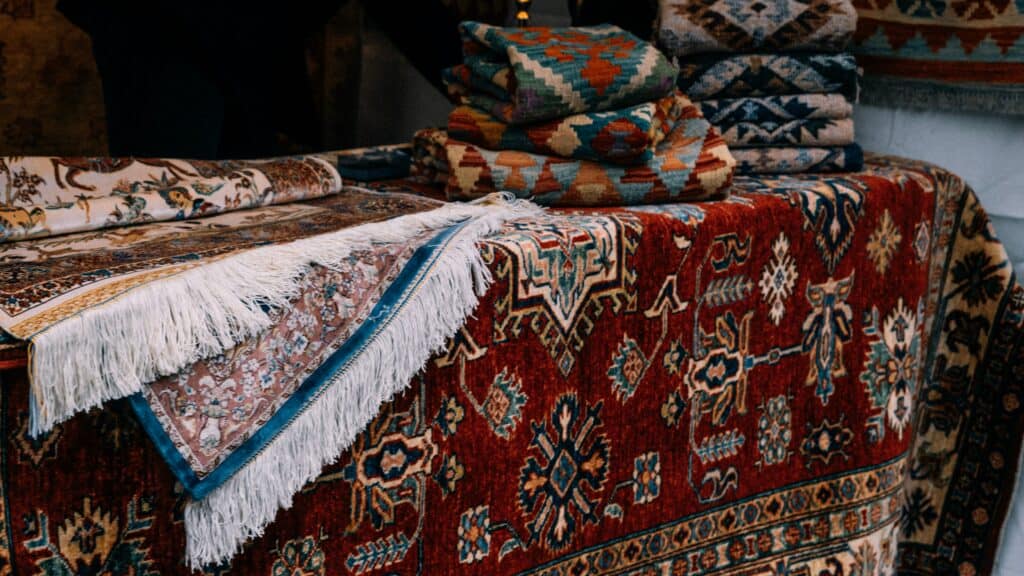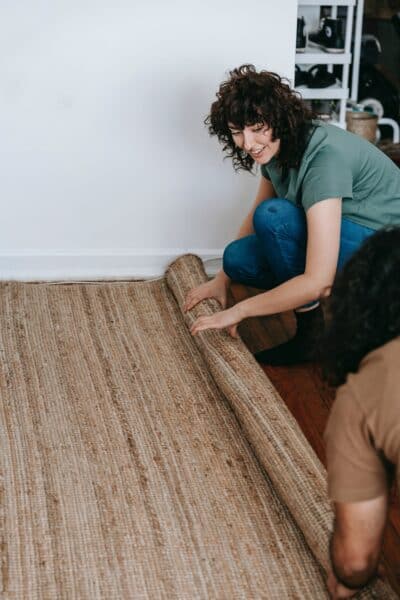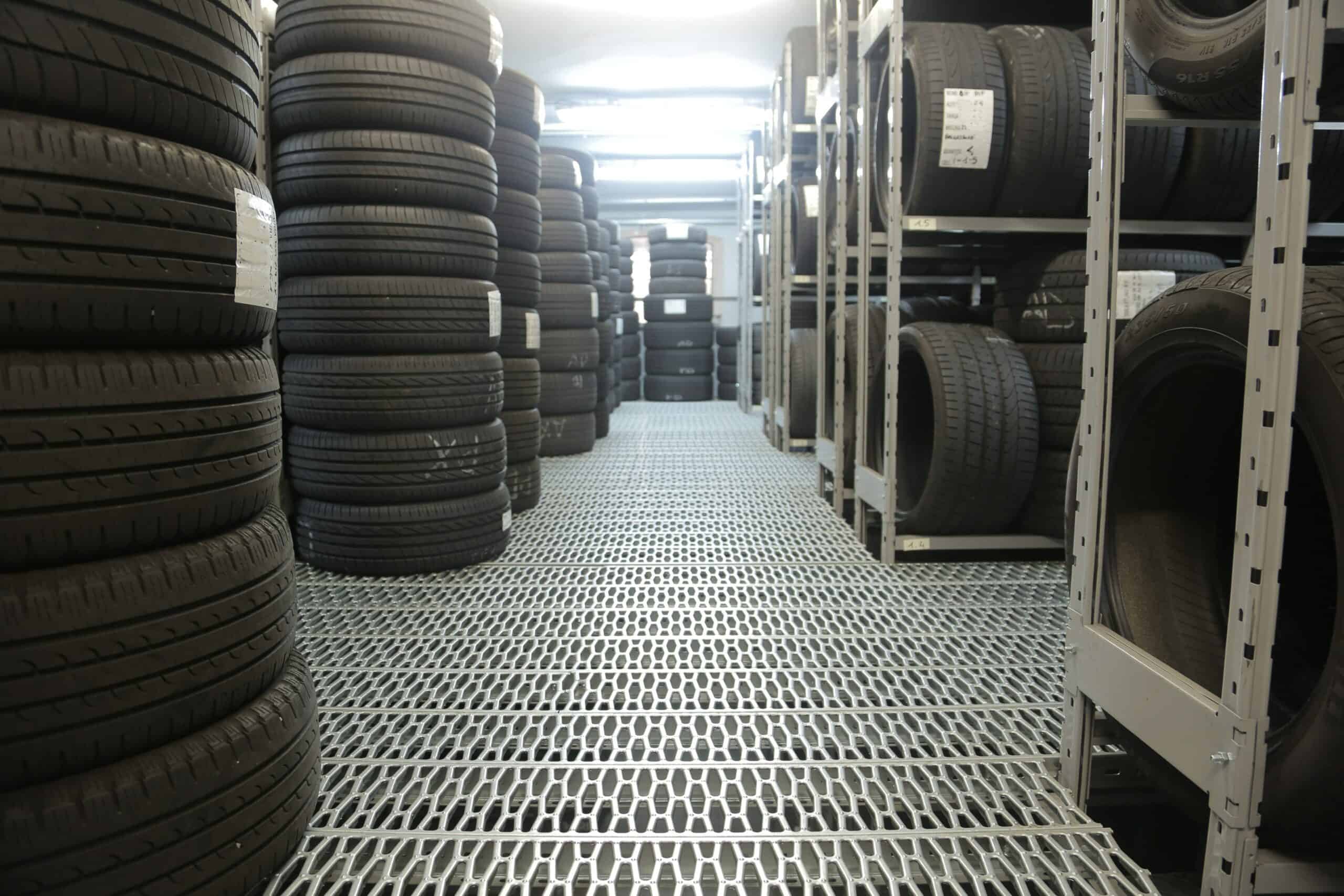If you need to ship an area rug or carpet, particularly if it’s valuable, it’s critical to pack it properly. You can safely send a Persian carpet, a hand-woven rug, or carpets made from delicate fibers such as silk or wool, but you need to know how to ship a rug properly. Here’s your guide.

Before you ship a rug
The first step before shipping a rug is to ensure it’s as clean as possible. If the rug has been in use (i.e., on the floor), start by vacuuming or sweeping to remove any loose dirt. Shaking the rug can remove additional dust.

You may also want to do a wet wash with a carpet cleaning solution compatible with the fiber composition of your rug. If you do, make sure the carpet has dried completely and vacuum it again to ensure the fibers aren’t bent before you pack it.
Steps to packing a rug for shipping

How you pack a rug for shipping will depend on its size and materials. The goal is to make it as compact as possible without damaging the carpet.
Find and follow the direction of the fibers
For rugs such as Persian carpets, most of the fibers (also called the grain or pile) will run in one direction. Feel the surface of the rug to determine the direction of the pile, and when you’re ready to roll the rug, roll it in the direction of the fibers.
Protect with paper or cotton cloth
Place a sheet of kraft paper or cotton cloth over the pile side of your rug. The paper or fabric should stick out a few inches on each side. Don’t use plastic sheeting; your carpet needs to breathe during shipping.
Fold rugs wider than 6 feet
Sometimes, you might want to fold your rug before you roll it, to avoid oversized shipping charges. Common wisdom says that if the narrowest dimension of your rug is more than 6 feet, you should fold it first.
Fold the rug in even thirds and fold it again if needed. Stop if you have a hard time folding the rug or if it makes a cracking noise. Some rugs can’t be folded without damaging them. If that’s the case with your large area rug, you’ll need to roll it and find a suitable carrier to ship it.

Roll the carpet

If you haven’t folded your carpet, start rolling from one of the shorter sides, which will have a fringe rather than a bound edge. Keep the paper or cloth inside and move in the direction of the pile.
The goal of rolling is to make your rug as compact as possible without damaging the pile. When you have it tightly rolled, fold the paper or cloth over the ends of the carpet. Then tie it in the center with a piece of twine or a strip of fabric. If your roll is wider than 4 feet, you might also want to secure each end.
Another carpet rolling and folding option: While most authorities suggest folding and rolling area rugs with the pile on the inside, some feel the best way to ship a rug is with the pile side on the outside. That reduces your chances of compressing and warping the pile, but you need to use great care when securing the roll, so you don’t compress some sections more than others, creating unsightly dents in the fibers.
Place in a plastic bag
To prevent liquid from getting into your carpet during transport, it’s a good idea to wrap it in plastic or slide it into a plastic bag and seal it. However, enclosing a carpet in plastic can cause condensation to form, which can damage the rug or attract moths. To prevent this, make holes in the bag so the rug can breathe and/or include mothballs and desiccant packs inside the plastic.
Box the rug carefully
The best practice for how to ship a rug safely is to put the rolled and covered rug into a cardboard box slightly larger than the rug, which protects the ends of the rug from damage. You may need to source custom packaging because your folded and rolled rug will likely need a nonstandard box size.
Add infill to keep the rug from moving in the box during transport. Use sturdy and breathable infill, such as kraft paper.
Best shipping methods for rugs

FedEx and UPS will accept a rug of up to 150 pounds for standard shipping. However, both have size limits that can lead to oversize shipping charges.
For instance, UPS limits package length to 108 inches, or 9 feet. To qualify for small package services, your box can have a combined length and girth of no more than 165 inches. Girth is 2x width + 2x height. And packages that weigh more than 70 pounds will be charged an extra fee.
FedEx adds an oversize charge of $135 to $200 per package for domestic shipments with a length greater than 96 inches (8 feet) or combined length plus girth of more than 130 inches.
How to keep costs down when you ship a rug
To keep rug shipping costs manageable, folding, rolling, and packing are all critical. If your box is too big, you could face dimensional weight pricing, which adds to the cost of shipping a rug. FedEx and UPS both use the greater of actual and dimensional weight to determine the billable weight of a package.
LTL freight may be the optimal shipping mode for larger rugs to keep costs down. Freight shipping may take longer than FedEx or UPS, but a freight carrier will be experienced at delivering oversized shipments. So, if you have packed your rug well, you can rest easy knowing that it will arrive safely.

Work with a 3PL that specializes in bulky and high-value goods
Rugs fall into the category of goods that can be hard to ship because of their dimensions and weight. In addition, many rugs are high-value items, and some are priceless antiques, so they need extra care in shipping.
If you need to ship one or two rugs as part of a move or one-off sale, consider working with a professional to help pack your rug safely. For eCommerce companies that sell valuable area rugs, partner with a 3PL experienced in heavy and oversized shipping, like Red Stag Fulfillment. We are expert at reducing DIM weight charges for bulky items and safely handling high-value merchandise. We ship more than 3 million packages annually, and our 3PL services and order accuracy are unmatched in the industry.
More about hard-to-ship products:











